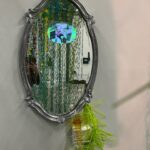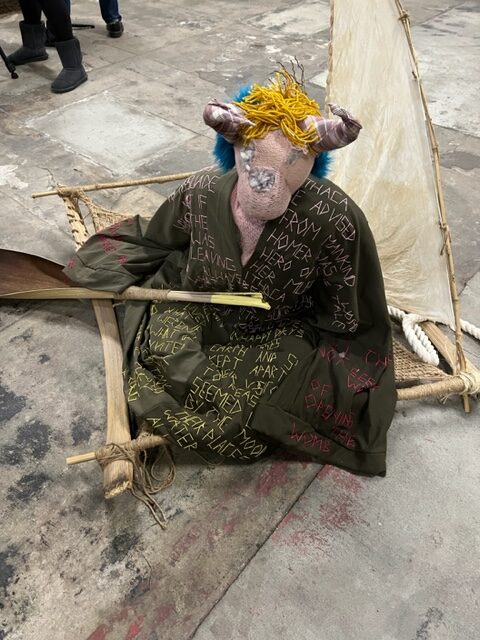
Can an exhibition offer something warm, welcoming, and cutting-edge immersive? Well, yes it can. Curated by Snezana Saraswati Petrovic, Zimmer Frei, now at Wonzimer Gallery brings together a cohesive, fascinating group of artists who explore what home means to them, as well as expressing a rich panoply of the experience of emigrating to the U.S. from a different country.
The word diversity has been too often misused, twisted to mean divisive. Here, its expression is just the opposite: the sum of our many different parts, of the blending of cultures and the unique individuality of each, forms the springboard for relationships, art, love, and hope.
The international creators on display have made Los Angeles their home, but still managed to maintain their sharp, insightful voices as they explore the country and city in which they now live, form connections, retain roots in their heritage, and find a place to set those roots down in the new culture of our polyglot country. There are sculptures and dimensional experiential works, paintings and video art, and performances. Every piece is tactile and resonant. The curation also makes good use of Wonzimer’s cavernous new space, including it’s towering ceilings.
Exhibiting artists and their original homelands include:
Adeola Davies-Aiyeloja, Nigeria
Alaia Parhizi, Switzerland
Amanda Maciel Antunes, Brazil
Arezoo Bharthania, Iran
Carsten Bund, Germany
Chenhung Chen, Taiwan
Kalpana Vadnagara, India
Katya Usvitsky, Belarus
Marisa Caichiolo, Argentina
Max Presneill, United Kingdom
Nadir G Gergis, Egypt
Snezana Saraswati Petrovic, Yugoslavia
Tom Dunn, Australia
Dunn’s black and white video art pulses with energy, humor, and joy; Presneil’s vivid abstract canvas exudes power and light.
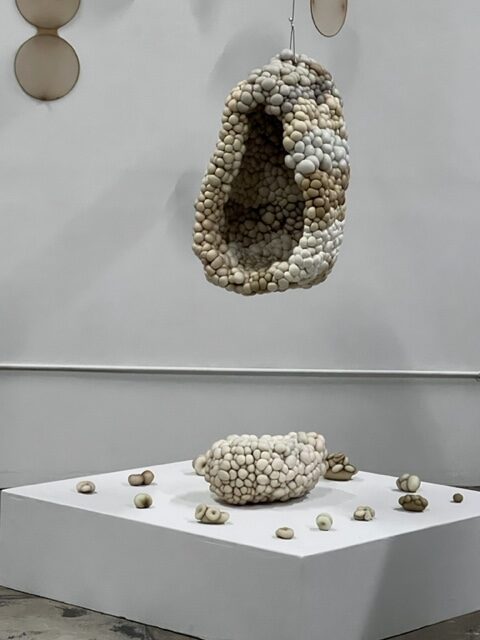
Petrovic’s own vine enclosed haven – replete with a “magic” AI mirror that also forms a terrific selfie spot, is rich and green, while Usvitsky’s fabric sculptures are presented here partially suspended, soft and fecund, like a nest on a cloud.

Gergis offers a dark and deep riff on the Coptic icon that speaks to the inner workings of the soul. Parhizi provides richly colored narrative painting that pairs beautifully next to Gergis work.
Vadnagara, working in a variety of mediums including fabric, gives viewers a vibrant palette and involving textures. On opening night, the artist also gracefully demonstrated the creation of nan bread with the gestures of a potter at a wheel.
Chen’s delicate hanging mesh sculptures contrast beautifully to her more solid metal and parts floor sculpture that recalls the shape of a volcano in form.
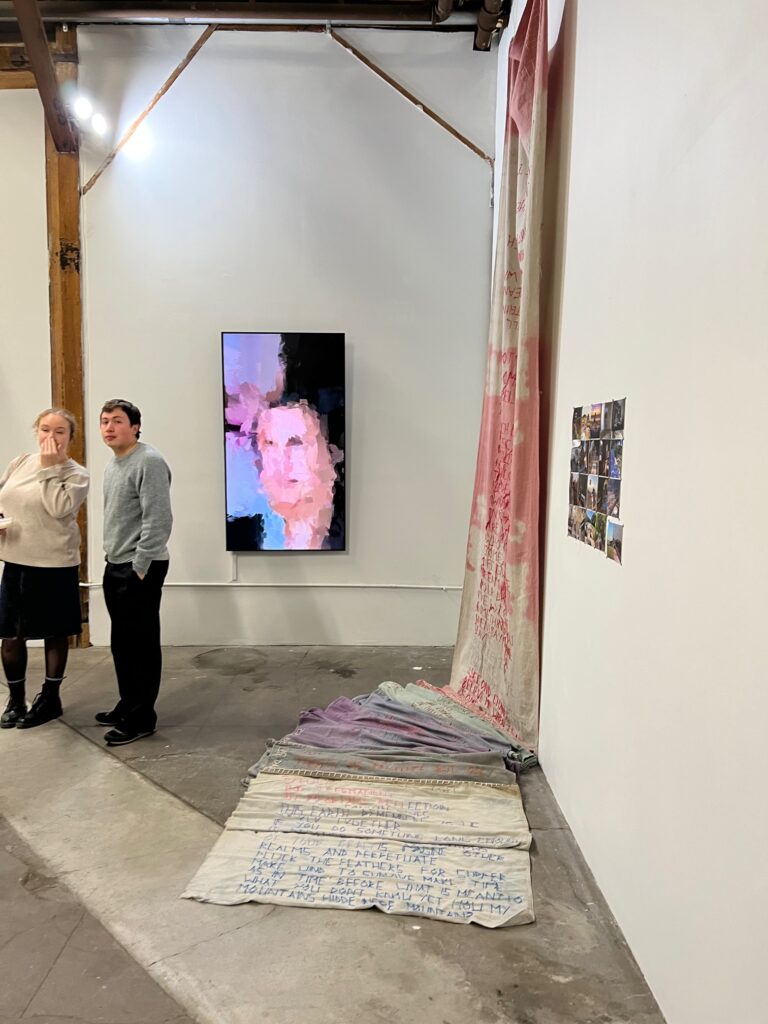
Bund’s video work is a resonant, shifting piece that moves, flower like, between face and abstract form.
In the foreground, above, is a scroll, hand embroidered by Antunes.
Caicholo creates a grass and earth miniature landscape along with a video installation that interacts nicely with Petrovic’s Edenic recylable plastic zip tie and fresh hanging orchid garden across the room. Also on view from Caicholo is a collection of silver, an assemblage provocatively filled with and using hair, Caicholo’s commentary on heritage, borders, and their transitory, arbitrary nature.
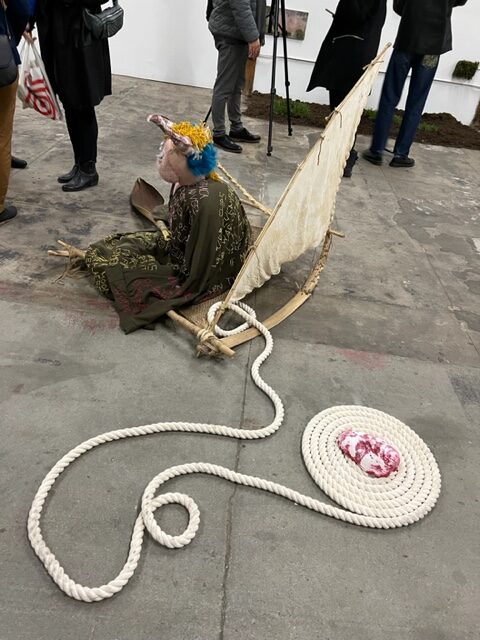

Antune’s textile sculpture and hanging wall scroll both lend an air of profound mystery and magic to her own travelers story. Antunes also created a tour-de-force performance piece, Memoryhouse, which she presented this past weekend.
Davies-Aiyeloja gives us a haunting, purple-hued image of women travelers in a lustrous painting.
Bharthania has a floor to ceiling stunner as delicate and intricate as the wings of a butterfly or a space kite, seen above.

There is also a singular “collage” of sorts in Zimmer Frei, with objects of signficance to each artist laid out in a mandala-like circle around a robe once worn by Usvitsky’s grandmother.
The exhibition title referes to a German phrase for vacancy, evoking that “welcome” or “vacancy” sign and fond memories of travels during Petrovic’s childhood with stays at private homes or B&Bs. This collection of works allows viewers to explore and move similarly with nomadic joy, being equally welcomed as we recall what we have, had, and want in a home, both physically and metaphorically, through art.
The exhibition runs through April 7th, with an artist dinner March 31st from 5:30 to 7:30 at the gallery, followed by short film screenings of works never before seen in the U.S. by Petrovic, Vojislav Radovanovic, and Neša Paripović.
Go get yourself welcomed!
- Genie Davis; photos by Genie Davis














